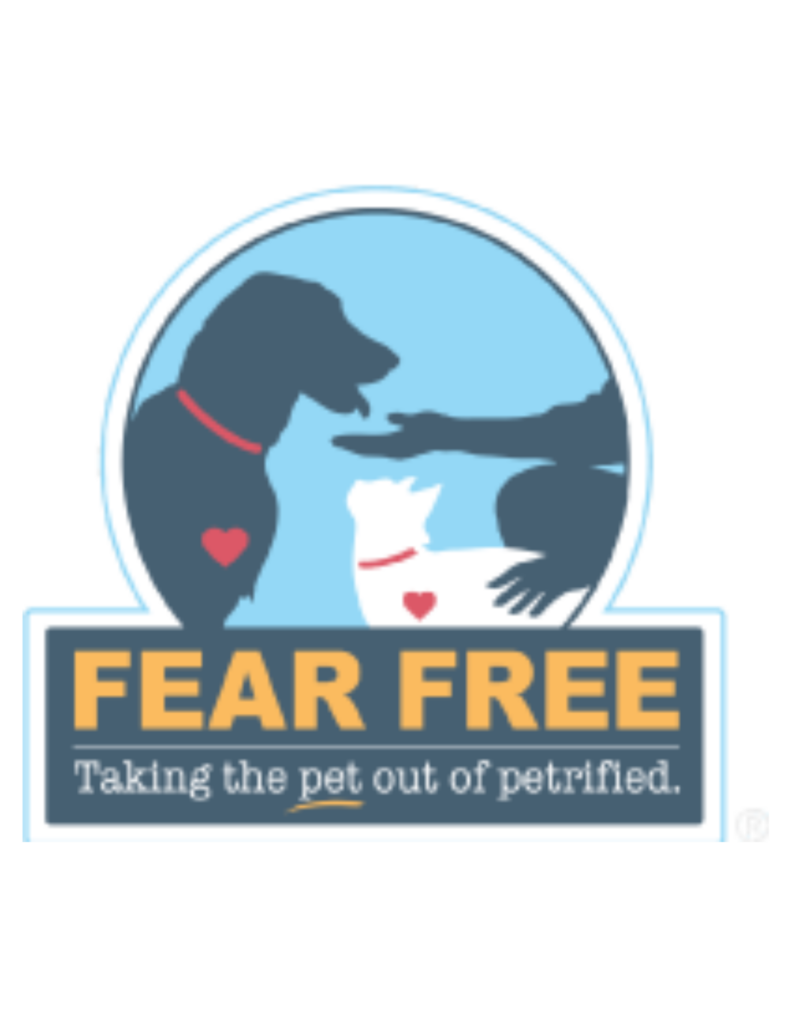Journey Home is a socially conscious shelter, but many may wonder what that looks like in our daily practices.
Fear Fear sheltering is the practice of reducing fear, anxiety, stress,
and frustration for animals.
When animals are looked at in comparison to humans, there are more similarities than differences. Try to put this in the perspective of you getting removed from your home or a location that is comfortable to you. While being removed, no one communicates what they’re doing or why. You’re brought to a secondary location and immediately strangers start to take measurements and examine your body. Everyone talks around you, but it’s in a language you cannot understand or speak.
You’re eventually put into a room that you can’t get out of on your own. You have no idea what’s coming next.
Would you be stressed? Afraid? Frustrated? Would anxiety be overpowering you?
A human response would likely be to rebel against this strange new environment. Our brains would fixate on understanding what’s happening and determining the best course of action. We see that in animals too. Their behavior is directly influenced by the amount of stress that they’re experiencing.
Dogs and cats communicate their fear, anxiety, stress, and frustration at the moment of initial contact and throughout their shelter stay. There are four cornerstones of Fear Free that are vital to an animal’s success at the shelter and post-adoption. When Fear Free practices are in place animals are proven to be healthier, happier, and more likely to find forever homes.
Cornerstones of Fear Free:
- Fear, anxiety, stress, and frustration are a serious problem that we must recognize and treat
- Positive communication is essential for success
- Always use a “considerate approach”
- “Gentle control”
At Journey Home you can see these practices each day. Our staff focuses on positive reinforcement, the use of treats, positive affirmations, and a lot of encouragement. We consistently watch for body language cues when transporting animals, feeding animals, and grooming animals. “Gentle control” and using a “considerate approach” truly comes down to having respect for the animals.
When we say that our mission is strengthening the human animal bond through compassion and education we root that in Fear Free practices. A shelter environment, no matter how loving, is still new sights, different smells, unknown people, and surprising actions. Until a predictable routine is established and familiarity can provide comfort, a lot of different behaviors may occur. This routine and the way that staff handles each animal on an individual level is why Fear Free sheltering is vital to the health and safety of animals.
Fear Free is a large umbrella that covers an array of practices. The non-negotiable aspects are:
- providing plenty of opportunities for social interactions
- having functional areas for resting and eating
- having a safe space to hide without being disturbed
- the ability to change locations
- allowing for species-typical behavior
- opportunities for play, exercise, and mental stimulation
Stress affects every organ in both animals and humans and has major impacts on behavior. Shelter life is inherently stressful. Even with all of the best practices in place and the most wonderful staff, animals who live in a shelter environment will likely experience varying levels of stress depending on a variety of other factors including how they got to the shelter and their condition when they arrived. When animals experience trauma, the result is similar to humans in that it can have lasting impacts. When we consider adding past trauma to a new environment and not knowing what to expect, it’s understandable why we may see odd and/or difficult behaviors. Dogs and cats communicate solely using body language and this manifests both actively and passively.
Emotions are contagious! These animals are around staff every day who are also experiencing their own frustrations, stress, and anxiety. Our kennel staff and volunteers strive to keep their own emotions in a happy place when interacting with our animals, because we know it makes a big difference. That is another reason Fear Free practices are so important. Even when one of us is having a bad emotional day, we have a set of guidelines to ensure the animals are always experiencing the best care possible.
Fear Free sheltering is important to the public as well, because these tools can be used in your home with your own animals. Whether you already have pets in the home or are considering adopting one, you should consider those non-negotiables that Fear Free highlights. What social interactions can you or are you offering your pets? How are you planning to set up spaces for them to eat, rest, and hide without disturbances? Will they be able to move locations? How will you handle species-typical behavior, especially right after adoption when the stress levels will be higher due to transitioning to yet another new environment? How will you incorporate play and mental stimulation into your daily routine? So much of what we do at the shelter, you are also doing at home and all of those efforts come down to strengthening that bond between us and our animal companions.
We consider each of these questions every day, with every animal at Journey Home. We have indoor kennels as well as outdoor dog runs. We frequently have animals in offices and out at events in order to change their scenery and types of social interactions. We use Kongs, practice nose work, and apply other enrichment techniques to aid in both play and mental stimulation. We form playgroups with dogs as well as cat groups within the cat room. Our kennel and veterinary staff practice gentle handling and are always watching for behavior cues. We keep detailed notes on every animal interaction so that we can ensure animals are not put into situations that may be uncomfortable or dangerous for their specific personality. We work closely with foster homes to learn about the animals outside of a shelter environment. We keep “quiet hours” in our dog rooms to ensure stress and anxiety stays low and to add to the predictability in their routine.
Every decision we make is tied to Fear Free theory because it maximizes the best outcome for the animals. If you’d like to read more about Fear Free sheltering, visit: https://fearfreeshelters.com/




